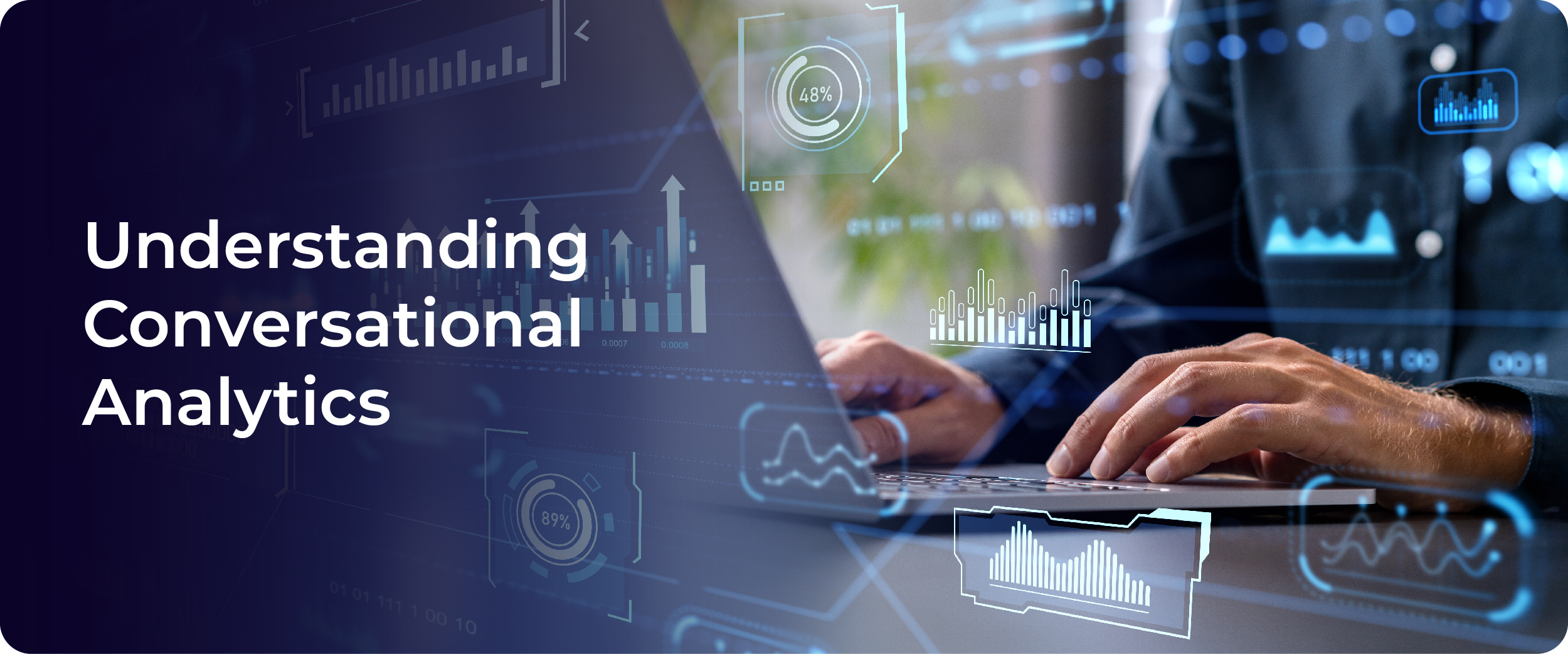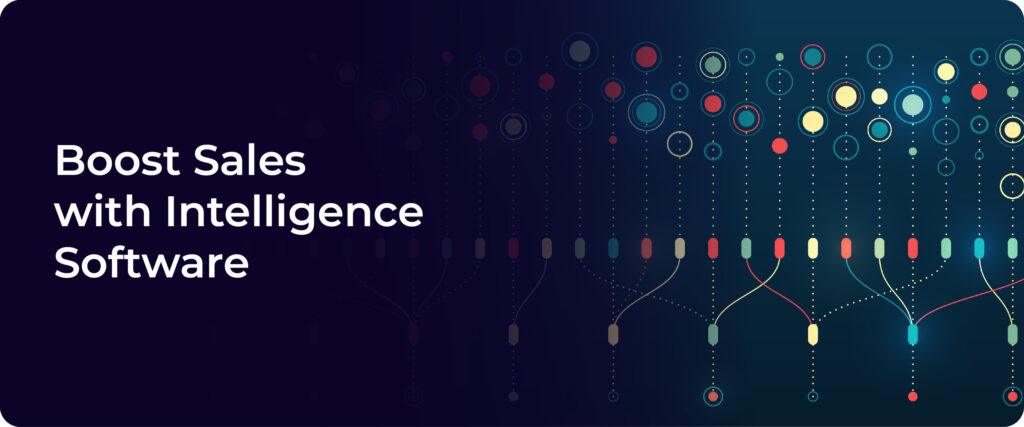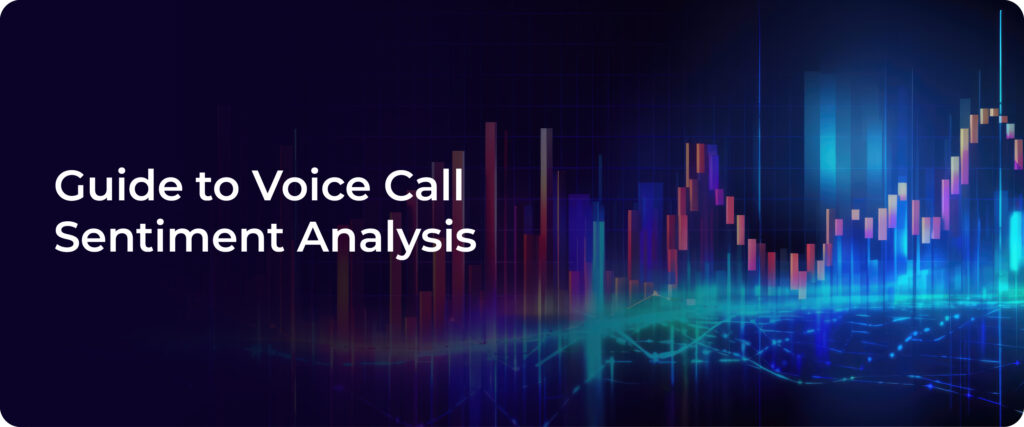
Conversational analytics is a field of data analysis that focuses on understanding and deriving insights from text or voice-based conversations, typically in the context of business interactions. These conversations can occur through various channels, including customer support chats, social media interactions, call center conversations, and more.
The primary goal of conversational AI analytics software is to extract meaningful information, patterns, and trends from these dialogues to inform decision-making and improve various aspects of business operations.
What is Conversational Analytics?
Conversational analytics involves the collection, processing, and analysis of conversational data to gain insights into customer behaviour, preferences, and sentiments. It encompasses techniques such as natural language processing (NLP) and machine learning to make sense of unstructured text or voice data.
How does Conversational Analytics Software Work?
To understand how conversational analytics work, it is crucial to understand the below terminologies:
1. Transcript
Every conversational platform starts with a transcript or STT(Speech-To-Text). Because ML models do not understand human speech, audio must be converted into text, which can then be used as the basis for analytics, automation, or reporting.
2. Moments
A moment can be understood as the intent behind a speech. Let me explain this better by giving an example.
Agent: I am talking from XYZ Insurance and I wanted to speak about our newest offering, a pet insurance
Customer: I do not need it. I don’t have any pets.
The moments here are Product introduction and Sales Rejection.
3. SOP
Each call center agency has an SOP for each situation. Agents are expected to communicate according to the SOP, which auditors can also use as a checklist to review.
A call recorded is sent through the model to be converted into text format with labeled persons as agent and customer. When converted into speech key moments are identified and using SOP as a checklist it is marked accordingly.
The Process
The semantic understanding behind the words and the reasons are listed and clubbed to find out the most common queries among customers queries, be addressed and implemented as proactive customer service.
When checklists are scored and a weighted score is presented a report is generated and data is represented in graphs accordingly.
Conversational Analytics vs Speech Analytics
| Aspect | Speech Analytics | Conversational Analytics |
| Definition | Processes sound word data from voice recordings, e.g., in call centers | Processes and evaluates both spoken and written conversations across all communication channels |
| Technologies Used | Automatic Speech Recognition (ASR) | Natural Language Processing (NLP), Machine Learning |
| Data Sources | Audio from voice calls | Voice calls, chat boxes, emails, social media |
| Data Type | Structured (transcribed words, keywords, sentiment, intent) | Both structured and unstructured (context, flow, intent across channels) |
| Key Insights | Transcribes words, extracts keywords, sentiment, intent; offers accurate, well-defined analysis | Comprehends context and flow of entire customer interaction; not limited to spoken words |
| Main Metrics | Agent performance, customer sentiment | Customer behavior, journey mapping, experience optimization |
| Scope | Focused on audio/voice calls | Holistic—covers all customer interactions, both spoken and written |
| Best Use Case | Observation and analysis of voice calls | Provides a complete picture of all customer interactions across channels |
Read Also: Voice Analytics in Contact Centers
Use Cases of Conversational Analytics
The implementation of conversational analytics in customer service results in more efficient and empathetic support, ultimately leading to higher customer satisfaction and loyalty. It empowers businesses to provide proactive, personalized service that aligns with customer needs and preferences. Let’s take a look at how the implementation of conversational analytics leads to more optimised results for various industries
1. Healthcare
Conversational analytics software is increasingly being employed in the healthcare sector to enhance patient care and streamline operations:
- Patient Feedback and Satisfaction: Hospitals and clinics collect patient feedback from surveys and reviews to gain insights into the patient experience. Conversational analytics helps in analyzing this feedback to improve service quality.
- Clinical Documentation: Healthcare providers use voice recognition and NLP to convert physician notes into structured data, reducing administrative workload and improving accuracy.
- Predictive Diagnostics: Analyzing medical transcripts and patient histories can assist in early disease detection and predictive analytics for patient outcomes.
2. E-commerce
In the e-commerce industry, conversational analytics software is vital for understanding customer preferences and optimizing the shopping experience:
- Customer Reviews and Feedback: E-commerce platforms analyze customer reviews to identify product issues, improve quality, and adjust marketing strategies.
- Customer Support Chatbots: AI Chat bots use conversational analytics to understand customer inquiries and provide relevant responses, enhancing the customer service experience.
- Personalized Recommendations: Conversational data, such as chat history and product searches, is used to offer personalized product recommendations, increasing sales and customer satisfaction.
3. Finance
The financial sector leverages conversational analytics for various purposes:
- Fraud Detection: Analyzing customer conversations and transaction data helps in identifying potentially fraudulent activities in real-time.
- Customer Support and Compliance: Conversational AI analytics software assists in monitoring customer interactions to ensure compliance with financial regulations and to improve the quality of service.
- Investment Analysis: Analyzing financial news articles, social media conversations, and expert opinions can inform investment decisions and sentiment analysis.
4. Customer Support
In customer support, conversational analytics is integral to delivering efficient and effective service:
Response Time Optimization: Conversational data helps in identifying high-demand periods, enabling businesses to allocate resources and respond to inquiries promptly.
Issue Resolution: Understanding common issues and their resolutions through conversational data allows for better training of support agents and the creation of comprehensive FAQs.
Predictive Support: By analyzing customer conversations, businesses can predict customer needs and proactively address potential problems.
The Advantages of Implementing Conversational Analytics
Conversational AI analytics offers a range of advantages that can significantly impact businesses and organizations. These benefits stem from the insights derived from analyzing text and voice-based conversations and can enhance decision-making, customer service, and overall business performance.
1. Improved Customer Insights
Conversational analytics provides deep insights into customer behavior, preferences, and sentiment. These insights help businesses understand their customers better and tailor their products, services, and marketing efforts accordingly. Key advantages in this regard include:
- Customer Segmentation: Businesses can categorize customers based on their conversations, enabling personalized marketing and targeted messaging.
- Feedback Analysis: Analysis of customer feedback and complaints allows for the identification of pain points and areas for improvement.
- Predictive Analytics: Understanding customer behavior from conversations aids in predicting future actions, such as purchasing decisions and potential churn.
2. Enhanced Decision-Making
The data derived from conversational analytics can inform strategic decisions across different departments within an organization. Key advantages in terms of decision-making include:
- Data-Driven Insights: Decision-makers can base their strategies on concrete data and trends from customer interactions rather than relying solely on intuition.
- Real-Time Monitoring: Businesses can monitor customer sentiment and trends in real-time, enabling quick responses to emerging issues or opportunities.
- Competitive Analysis: Analyzing conversations about competitors can provide insights into the competitive landscape and help businesses adapt to changing market conditions.
3. Cost Savings
Conversational analytics can lead to cost savings in various ways:
- Efficiency Improvements: By identifying common customer inquiries or complaints, businesses can optimize their processes and reduce the time and resources spent on addressing repetitive issues.
- Reduction in Customer Churn: Early detection of at-risk customers allows for proactive retention efforts, reducing the cost of acquiring new customers to replace those lost.
Real-World Examples of Brands using Conversational Analytics
To illustrate the advantages of conversational analytics, here are a few real-world examples:
- Netflix: Netflix analyzes customer conversations and viewing behavior to recommend personalized content, resulting in increased user engagement and retention.
- Uber: Uber uses conversational analytics to enhance the rider and driver experience, collecting feedback and resolving issues more effectively.
- Airbnb: Airbnb leverages conversational data to identify host and guest preferences, enabling better matching and improving overall user satisfaction.

Challenges of Conversational Analytics
Conversational analytics, while powerful, comes with its set of challenges that organisations need to address for successful implementation and operation. By proactively addressing these challenges and implementing best practices, organizations can harness the power of conversational analytics while mitigating potential risks and ensuring compliance with data privacy regulations.
Common Challenges
- Data Privacy and Compliance: Handling and analyzing customer conversations may raise privacy concerns and compliance requirements, especially with regulations like GDPR and HIPAA.
- Data Quality: Conversational data can be noisy and contain errors, making it essential to address data quality issues to ensure accurate analysis.
- Scalability: As the volume of conversations grows, organizations may face scalability challenges in terms of data storage and processing capacity.
Solutions and Best Practices
- Data Anonymization: To address data privacy concerns, businesses can employ techniques like data anonymization and pseudonymization to protect customer information while still extracting valuable insights.
- Data Preprocessing: Rigorous data preprocessing, including text cleaning and normalization, helps enhance data quality for more accurate analysis.
- Scalable Infrastructure: Investing in scalable data storage and processing infrastructure can ensure that conversational analytics can handle increasing volumes of data.
Read Also: What is Agent Assist AI?
Optimize Your Contact Center with ConvozenAI
Are you ready to address the challenges faced by your contact centre while harnessing a multitude of benefits that can transform your customer service operations?
ConvozenAI’s Conversational Intelligence provides innovative conversational analytics solutions, offering a comprehensive way to tackle these challenges and unlock the associated benefits, making it the ideal choice for organizations aiming to elevate their customer service to the next level.
ConvozenAI is a cutting-edge cloud-based conversational analytics platform specifically designed to help contact centers streamline their operations and provide exceptional customer experiences. With its advanced natural language processing (NLP) capabilities, ConvozenAI excels at analyzing conversations between customers and agents, offering valuable insights that drive improvements in customer service, agent performance, and operational efficiency.
Features and Benefits
- Real-time Conversational Insights: ConvozenAI takes real-time analysis to the next level by providing immediate insights into customer sentiment and agent performance as conversations unfold. This feature empowers contact centres to respond proactively and make on-the-fly adjustments to ensure customer satisfaction.
- Automated Analysis of Customer Sentiment: ConvozenAI employs advanced NLP algorithms to automatically detect and categorize customer sentiment within conversations. This invaluable feature allows contact centres to gauge customer satisfaction in real time and pinpoint areas for enhancement.
- Identification of Common Issues: convozen stands out by recognizing recurring customer issues across interactions. This proactive capability allows contact centres to address issues swiftly, reducing customer frustration and enhancing overall service quality.
- Agent Performance Analytics: convozen delves into agent performance metrics, including average handle time, resolution rates, and customer satisfaction. These insights are indispensable for identifying high-performing agents, coaching those who need improvement, and fostering a more productive and customer-centric work environment.
- Actionable Recommendations: In addition to offering insights, convozen provides actionable recommendations that empower contact centres to implement changes that have a tangible impact on customer satisfaction and operational efficiency.
Challenges Faced by Contact Centers:
- Increasing Customer Expectations: Today’s customers demand faster and more personalized service, and contact centres must meet these heightened expectations.
- The Rise of Digital Interactions: Customers increasingly engage with businesses through digital channels, including chat and social media, presenting new challenges for contact centres.
- The Need for Data-Driven Decision-Making: To thrive in the modern business landscape, contact centres must make data-driven decisions to optimize their operations and customer service.
How convozen Addresses These Challenges:
- Real-time Insights: Convozen provides immediate insights into customer sentiment and agent performance, enabling contact centers to address issues swiftly and enhance customer satisfaction.
- Identifying Common Issues: Convozen’s ability to identify recurring customer issues allows contact centers to be proactive, preventing problems before they escalate.
- Actionable Recommendations: By offering actionable recommendations, Convozen equips contact centers with the tools to make data-driven decisions, further improving their operations.
Additional Benefits Provided by Convozen:
- Identify Upselling and Cross-Selling Opportunities: convozen analyzes customer conversations to identify opportunities for upselling and cross-selling products and services, boosting revenue potential.
- Improve Compliance with Regulations: convozen assists contact centres in adhering to industry regulations by identifying and flagging potential compliance issues, and reducing legal and regulatory risks.
- Enhance Employee Satisfaction: By offering insights into agent performance, convozen helps contact centres identify and address issues impacting employee satisfaction, resulting in a more motivated and content workforce.
Unleash Your Contact Center’s Potential Today! 👉 Get Started with ConvoZen.AI and Elevate Customer Experience.
Schedule a Demo Now!
FAQs
1: What are examples of conversational analytics?
A: Analyzing logs of chats, call transcripts, social media messaging, and the dry run of chatbot messages to identify ways to improve the customer experience and service delivery.
2. What is conversational data analytics?
A: Analyzing spoken and written customer interactions using artificial intelligence and natural language processing to derive insights about customer behaviour and sentiment.
3. What is conversational speech analytics?
A: Conversational speech analytics analyzes voice (audio) conversations through the use of speech recognition and natural language processing to understand customer sentiment, intent, and satisfaction.
4. What is conversational analysis?
A: The process of analyzing natural language conversations to obtain insight for improved customer experience and business decisions.
5. What is a conversational analytics platform?
A: A software solution for processing and analyzing conversational data across all channels, primarily through the use of AI and Natural Language Processing, and extracting reports and actionable insights.
6. What does conversational engagement analytics for sales?
A: It allows us to interpret the sales conversation and ascertain the customer intent, sentiment, and engagement to improve sales performance.
7. How does conversational engagement analytics benefit sales teams?
A: It allows for better understanding of customer behavior, which will allow for more personalized communication that creates better selling opportunities and outcomes.


